AGTR-1 Products
The Angiotensin II Receptor, Type 1 (AGTR-1), also known as AT1, is a member of a family of seven transmembrane G protein-coupled receptors that mediates the effects of Angiotensin II, the major bioactive peptide of the renin-angiotensin system. AGTR-1 is 359 amino acids (aa) in length with a predicted molecular weight of 41.1 kDa. Human AGTR-1 shares 94% and 95% aa sequence identity with mouse and rat orthologs, respectively. Interestingly, most species express a single AGTR-1 gene while rodents contain two related genes, which are termed AGTR-1A and AGTR-1B. AGTR-1 is widely expressed with the highest levels being found in the liver, kidney, adrenal glands, brain, heart, vasculature, and lungs. It is coupled to G proteins containing the alphaq/11 subunits and has been shown to activate the PLC-IP3-Ca2+ and PLC-DAG-PKC, MAPK, and Jak/STAT signal transduction pathways. AGTR-1 has been shown to mediate most of the physiological actions of Angiotensin II including vasoconstriction, aldosterone and vasopressin release, salt and water retention, cell proliferation and migration, and sympathetic stimulation. Additionally, AGTR-1 has been suggested to play a role in the induction of reperfusion arrhythmias. AGTR-1 antagonists are used to treat hypertension, diabetic nephropathy, and congestive heart failure.
91 results for "AGTR-1" in Products
91 results for "AGTR-1" in Products
AGTR-1 Products
The Angiotensin II Receptor, Type 1 (AGTR-1), also known as AT1, is a member of a family of seven transmembrane G protein-coupled receptors that mediates the effects of Angiotensin II, the major bioactive peptide of the renin-angiotensin system. AGTR-1 is 359 amino acids (aa) in length with a predicted molecular weight of 41.1 kDa. Human AGTR-1 shares 94% and 95% aa sequence identity with mouse and rat orthologs, respectively. Interestingly, most species express a single AGTR-1 gene while rodents contain two related genes, which are termed AGTR-1A and AGTR-1B. AGTR-1 is widely expressed with the highest levels being found in the liver, kidney, adrenal glands, brain, heart, vasculature, and lungs. It is coupled to G proteins containing the alphaq/11 subunits and has been shown to activate the PLC-IP3-Ca2+ and PLC-DAG-PKC, MAPK, and Jak/STAT signal transduction pathways. AGTR-1 has been shown to mediate most of the physiological actions of Angiotensin II including vasoconstriction, aldosterone and vasopressin release, salt and water retention, cell proliferation and migration, and sympathetic stimulation. Additionally, AGTR-1 has been suggested to play a role in the induction of reperfusion arrhythmias. AGTR-1 antagonists are used to treat hypertension, diabetic nephropathy, and congestive heart failure.
Potent vasoconstrictor peptide
| Purity: | ≥95% (HPLC) |
Selective, non-peptide AT1 antagonist
| Alternate Names: | DuP-753 |
| Chemical Name: | 2-Butyl-4-chloro-1-[[2'-(1H-tetrazol-5-yl)-[1,1'-biphenyl]-4-yl]methyl]-1H-imidazole-5-methanol potassium salt |
| Purity: | ≥99% (HPLC) |
| Reactivity: | Human, Mouse, Rat, Rabbit |
| Details: | Rabbit IgG Polyclonal |
| Applications: | IHC, WB, ELISA, ICC/IF |
| Reactivity: | Human |
| Details: | Mouse IgG2b Monoclonal Clone #1010106 |
| Applications: | WB |
| Reactivity: | Human |
| Details: | Mouse IgG2b Monoclonal Clone #1010103 |
| Applications: | Flow, CyTOF-ready |
AT1 antagonist
| Alternate Names: | CV 11974 |
| Chemical Name: | 2-Ethoxy-1-[[2'-(1H-tetrazol-5-yl)[1,1'-biphenyl]-4-yl]methyl]-1H-benzimidazole-7-carboxylic acid |
| Purity: | ≥98% (HPLC) |
| Reactivity: | Human |
| Details: | Mouse IgG2b Monoclonal Clone #1010103 |
| Applications: | Flow |
| Reactivity: | Human |
| Details: | Mouse IgG2b Monoclonal Clone #1010103 |
| Applications: | Flow |
| Reactivity: | Human |
| Details: | Mouse IgG2b Monoclonal Clone #1010103 |
| Applications: | Flow |
| Reactivity: | Human |
| Details: | Mouse IgG2b Monoclonal Clone #1010103 |
| Applications: | Flow |
| Reactivity: | Human |
| Details: | Mouse IgG2b Monoclonal Clone #1010103 |
| Applications: | Flow |
| Reactivity: | Human |
| Details: | Mouse IgG2b Monoclonal Clone #1010103 |
| Applications: | Flow |
| Reactivity: | Human |
| Details: | Mouse IgG2b Monoclonal Clone #1010103 |
| Applications: | Flow |
| Reactivity: | Human, Mouse |
| Details: | Goat IgG Polyclonal |
| Applications: | IHC, WB, ELISA |
| Reactivity: | Human, Mouse |
| Details: | Rabbit IgG Polyclonal |
| Applications: | WB |
High affinity, selective AT1 antagonist
| Alternate Names: | CGP 48933 |
| Chemical Name: | (S)-3-methyl-2-[N-({4-[2-(2H-1,2,3,4-tetrazol-5-yl)phenyl]phenyl}methyl)pentanamido]butanoic acid |
| Purity: | ≥99% (HPLC) |
Selective non-peptide AT1 antagonist
| Chemical Name: | 5,7-Diethyl-3,4-dihydro-1-[[2'-(1H-tetrazol-5-yl)[1,1'-biphenyl]-4-yl]methyl]-1,6-naphthyridin-2(1H)-one hydrochloride |
| Purity: | ≥98% (HPLC) |
| Applications: | ELISA |
| Applications: | AP |
| Applications: | WB, ELISA, MA, AP |
| Applications: | WB |


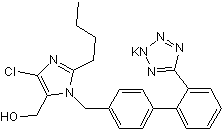

![Western Blot: AGTR-1 AntibodyBSA Free [NBP1-77078] Western Blot: AGTR-1 AntibodyBSA Free [NBP1-77078]](https://resources.bio-techne.com/images/products/AGTR-1-Antibody-Western-Blot-NBP1-77078-img0012.jpg)

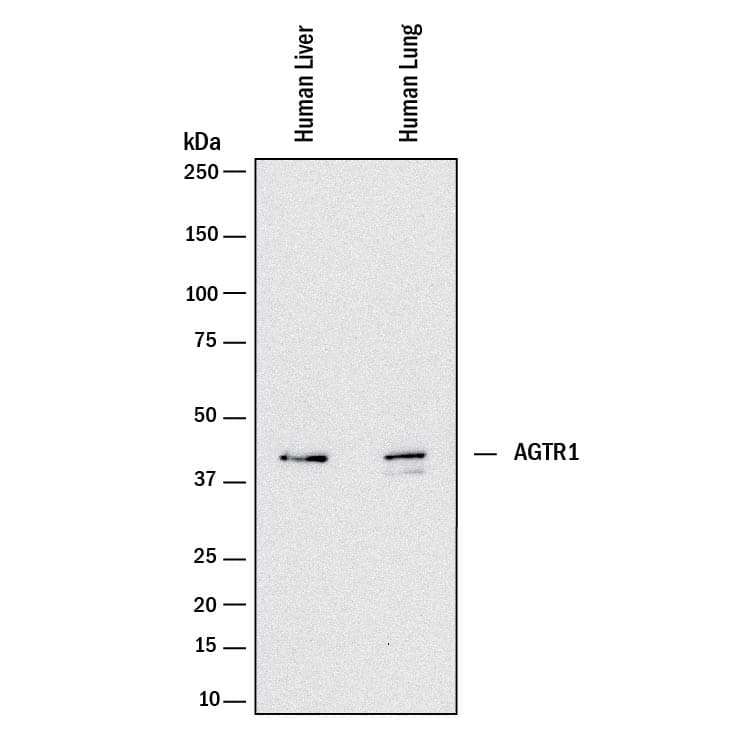
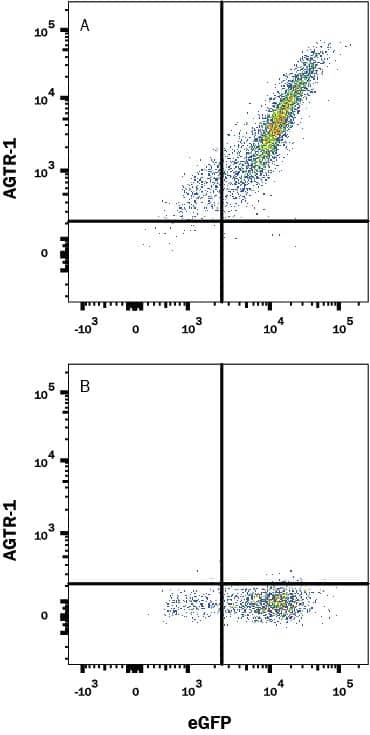
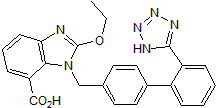
![Western Blot: AGTR-1 Antibody [NB100-57073] Western Blot: AGTR-1 Antibody [NB100-57073]](https://resources.bio-techne.com/images/products/AGTR-1-Antibody-Western-Blot-NB100-57073-img0004.jpg)
![Western Blot: AGTR-1 Antibody [NBP1-59006] Western Blot: AGTR-1 Antibody [NBP1-59006]](https://resources.bio-techne.com/images/products/Angiotensin-II-Type-1-Receptor-Antibody-Western-Blot-NBP1-59006-img0002.jpg)

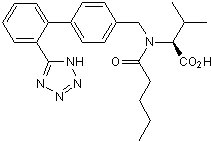
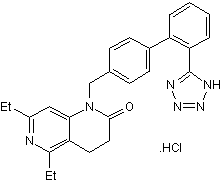
![ELISA: Human AGTR-1 ELISA Kit (Colorimetric) [NBP2-69082] - Human AGTR-1 ELISA Kit (Colorimetric)](https://resources.bio-techne.com/images/products/nbp2-69082_human-agtr-1-elisa-kit-colorimetric-132202416173496.jpg)
![SDS-PAGE: Recombinant Human AGTR-1 GST (N-Term) Protein [H00000185-Q01] SDS-PAGE: Recombinant Human AGTR-1 GST (N-Term) Protein [H00000185-Q01]](https://resources.bio-techne.com/images/products/Recombinant-Human-AGTR-1-Protein-SDS-Page-H00000185-Q01-img0001.jpg)
![Western Blot: AGTR-1 Overexpression Lysate [NBP2-10541] Western Blot: AGTR-1 Overexpression Lysate [NBP2-10541]](https://resources.bio-techne.com/images/products/Angiotensin-II-Type-1-Receptor-Overexpression-Lysate-Adult-Normal-Western-Blot-NBP2-10541-img0001.jpg)